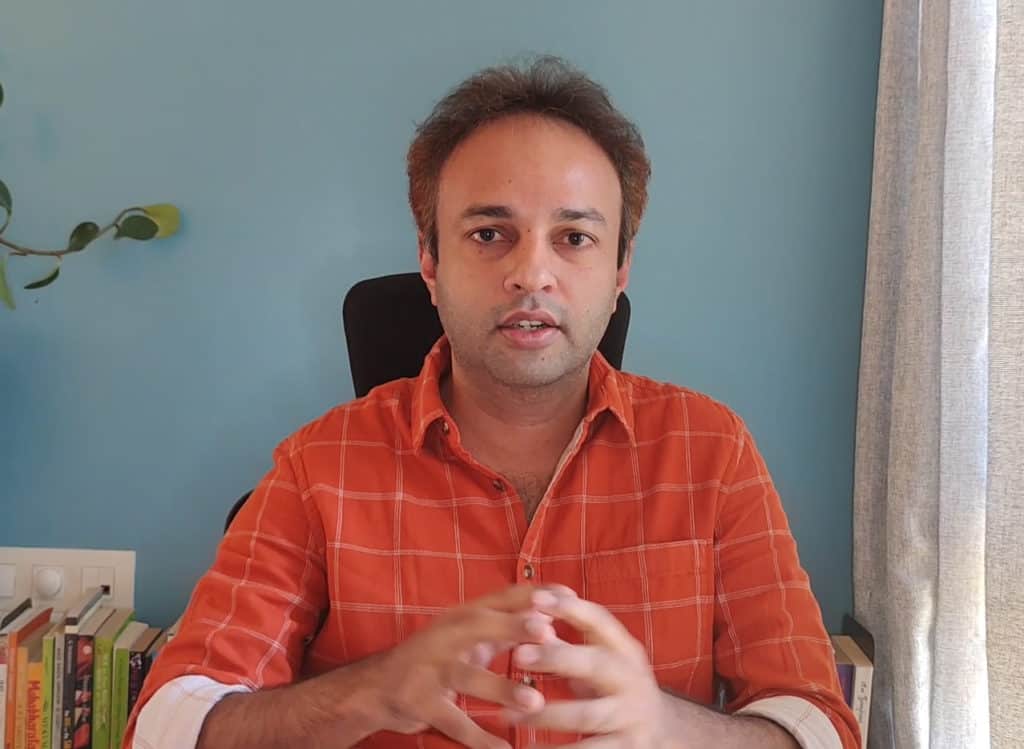The refrain has become common. That our cities are total unsuited to handle extreme rainfall events in a warming climate scenario. Extreme rainfall events are when a huge amount of rain occurs over a short period of time.
And such situations are happening in different part of the country, in Karnataka, Assam and north-east, in recent days as the monsoon season enters its second month. The situation will only worsen, say experts, as the country rapidly urbanises, and urban planning not being in sync with managing and mitigating the effects of such events.
“Water entered my house in Chandigarh some years back during rains,” recalls Devinder Sharma, a noted agricultural expert, who lives in a well-planned part of Chandigarh. “Even now it comes upto my gate every year in monsoons”.
Read more: Why climate change mitigation requires a serious rethink on urban construction
In a broader perspective, increased rainfall and related floods are already disturbing lives and livelihoods. Extreme rains trigger extreme floods, damaging infrastructure, agriculture, transportation, and causing loss of life and property. Cities are even more vulnerable due to unplanned, unsustainable urban development, encroachment of natural ecosystem and concretisation, according to experts.
Devinder Sharma is not alone in this ordeal. Most people in cities face a similar situation. While there are reports and studies which predict extreme rainfall events increasing over India in the coming months and years, urban areas start to crumble even in normal rains. Images of flooded roads, stuck vehicles and people wading through water have become all too common.

Unsustainable city level planning
“City level planning has been unsustainable, encroaching natural ecosystems like mangroves which has further sharpened the impact of extreme rainfall,” said says Abinash Mohanty from the Council on Energy, Environment and Water (CEEW), who authored a report `Preparing India for Extreme Climate Events.’
CEEW has also carried out mapping of floods, and found that post-2005, 55 districts or more have been witnessing extreme flood events annually.
“Cities such as Mumbai, Bangalore, Nasik, Chennai, and Guwahati are being clearly impacted due to increased rainfall events,” adds Mohanty. “Urban flooding has ripple effect. Economic activity is impacted, for example as supply chains are disrupted. The 2015 Chennai floods had badly impacted IT industry there.”
Other scientists and experts too stress upon the need to redesign cities. “Indian cities are vulnerable to flash floods as rapid development, concretization, and land use changes shrink down the floodplains and congest the rivers,” said Dr Roxy Mathew Koll from the Indian Institute of Tropical Meteorology and an Intergovernmental Panel on Climate Change (IPCC) author.
“We need to redesign our cities and make these resilient to the intensifying floods,” said Dr Koll. “An ecosystem-based approach may be suitable for some coastal cities like Mumbai, where mangroves and floodplains have traditionally acted as the lungs of the city, protecting it from flood water and strong winds”.
Koll, who has carried out several studies on climate warming said coastal cities may be worst affected as these are at heightened risk of overlapping extreme events, where cyclonic storm surges, heavy rains and sea level rise combine to raise the flood level to never-seen proportions.
Read more: What’s causing climate risks in our smaller cities and towns?
“We call them compound events,” said Dr Roxy Koll (see interview). This is already happening along the coastline. Cyclone Yaas, (which made landfall in Odisha and caused heavy damage in West Bengal during May 2021 is a perfect example where these multiple extremes inundated the coastline several kilometres inland.”
“Warmer air holds more moisture, and that too for a longer time,” said Dr Koll. “As a result, it does not rain for a long period, but when it rains, it dumps all the moisture in a short spell. Hence, we get a week’s or a month’s rainfall in a few days or even a few hours”.
India’s weather department accepts that India is one of the most vulnerable countries for extreme weather events. A Germanwatch 2020 report saw India as the seventh most vulnerable country with respect to climate extremes.
“Extreme rainfall events are increasing over tropical areas and we have observed this trend in India as well during monsoons,” said Dr M Mohapatra, director general of India Meteorological Department (IMD). “Their frequency has increased. IMD has collated 30-year data on this for each state at district level”.
According to IMD, Delhi last year experienced around 6-7 heavy rainfall events during the monsoon season in comparison to 2-3, which used to happen on an average every season earlier. India as a whole had 125 extremely heavy rainfall events during September and October in 2021. There were 89 extremely heavy rainfall events in September, 36 in October.
In comparison, 2020 witnessed 61 extreme rain events in September. There were 59 such events in the same month in 2019, 44 in 2018 and 29 in 2017. October 2020 had 10 such events, 2019 saw 16, 2018 had 17 and 2017 had 12 such events in October.
Technically, rainfall below 15 millimetres in 24 hours is called light, between 15 and 64.5 millimetres moderate, between 64.5 and 115.5 millimetres heavy, and between 115.6 and 204.4 millimetres very heavy. Rains above 204.4 millimetres in a day are categorised as extremely heavy.
Needed, an early warning system
“It depends on how we have built our cities,” said Akshit Sangomla from Centre for Science and Environment. “There is no place for water to go. While predictions are that extreme rainfall will increase, cities do not have systems to soak water. Cities like Delhi, Mumbai, Chennai will become worse in such a scenario”.
An efficient early warning system is another important requirement for making the country resilient for extreme rainfall events.
“There are efficient warning systems for cyclones which give information about exact point and time of landfall. Similar systems are needed for extreme rainfall in cities also,” Sangomla said.
Mumbai has developed a good early warning system for rainfall. It is being done for Chennai as well. But such a system is not there in all the cities. “Delhi has seen flooding for the past two years, and needs such a system,” said Sangomla.
IMD is working to improve its forecast systems. Currently, it forecasts rainfall upto five days in advance for 36 meteorological subdivisions. Forecast one day in advance has an accuracy of about 74% and for five days, accuracy is 60%.
“Within next five years, we will start forecast at block level,” said Dr Mohapatra. “We are strengthening observation network, installing more automatic weather stations, doppler weather radars (DWRs) and rain gauges. Models are also being improved for higher resolution and accuracy”.
Identification of risk has, however, to be complemented with climate action plans, which are available at district level. However, to be more efficient, these plans should be available at city level since vulnerabilities and adaptability of people within a district varies depending on factors such as topography, economy, and kind of buildings, according to experts.
Some states are developing city-level climate action plans. “Chennai is working on such a plan and Maharashtra has developed a plan for Mumbai while it is working on other cities like Nasik,” said Mohanty. “We are supporting Maharashtra in this. In Mumbai we know which wards are impacted”.
This information can be then used for city planning. Climate proof critical infrastructure can be developed in these areas. Transport infrastructure, bridges, hospitals, roads, power-related buildings, all need to be retrofitted.
IMD has developed a climate hazard and vulnerability atlas at district level for cold wave, heat wave, flood, lightning, snowfall, dust storm, hail storm, thunderstorm, fog, strong winds, extreme rainfall, drought and cyclone. As per the information contained in the atlas, 46% of the districts and 44% of the country’s population are moderate to very highly vulnerable for extreme rainfall events.
All the districts of entire western coast, most districts of Assam and Meghalaya, Tripura, Kerala and few districts of Bihar, Jharkhand, West Bengal, Karnataka, Odisha, Maharashtra and Uttarakhand have maximum probable frequency of heavy rainfall events of more than 20 days during this southwest monsoon season.

Interview: “Three-fold rise in extreme rainfall events”
E-mail interview with Dr. Roxy Mathew Koll, climate scientist with Indian Institute of Tropical Meteorology, and IPCC author. Excerpts:
Which parts of the country/ areas/ cities are more likely to see increase in extreme rainfall events? Why?
Several parts of India have already seen a three-fold rise in widespread extreme rainfall events that cause large scale floods. The rising trend in extreme rains is observed across central and northern India. With continued emissions, we expect the heavy rains in these regions to amplify. In general every degree Celsius rise in temperature corresponds to a 7–10% rise in rainfall.
Are areas in the North India comparatively safe from these events?
While some regions show a consistent rise in heavy rains and landslides, cities and urban areas are not free from flash floods and water logging. Urbanisation compounds the impact as it provides less flood plains for the water to sink in. Heavy rains in Himalayan foothills and the Western Ghats are similar in some ways as these hills are facing rapid development and land use changes that aggravate landslides and flash floods.
During which parts of the year extreme rainfall events are more likely?
Extreme rainfall events are more likely during the monsoon season, particularly during July–August when the monsoon winds are strong and carry a lot of moisture from the Indian Ocean. This is also the time of monsoon depressions that form over the Bay of Bengal and carry a lot of moisture inland, along the path of the monsoon winds.
However, in the recent period we do see extreme rainfall events happening during other seasons too, in response to climate change. Warm air holds more moisture, for a longer time. As a result, there is more moisture available in the atmosphere, that can support heavy rains during other seasons too.
Does global warming impact cyclone frequency and intensity? and will that also add to extreme rainfall events?
In response to rapid warming in the Arabian Sea, the frequency of cyclones in this basin have increased by 52% during the last four decades, while the intensity has increased by 20–40%. Studies show that cyclones are now bringing in more rains than earlier. Hence, this can also lead to extreme rainfall events.
One study by IITM, Dr Koll being one of the scientists associated with it, found a threefold rise in widespread extreme rain events over central India from the west coast of Gujarat/Maharashtra to the east coast of Odisha during 1950–2015. The study published in Nature Communications in 2017 said floods attributed to extreme rain events in India during the past decade amounted to losses of about $3 billion per year. There were 268 flooding events reported in India over 1950–2015 affecting about 825 million people, leaving 17 million homeless and killing 69,000 people.